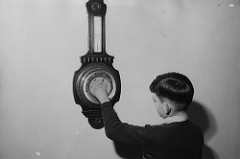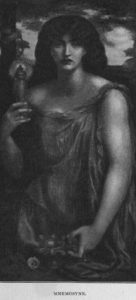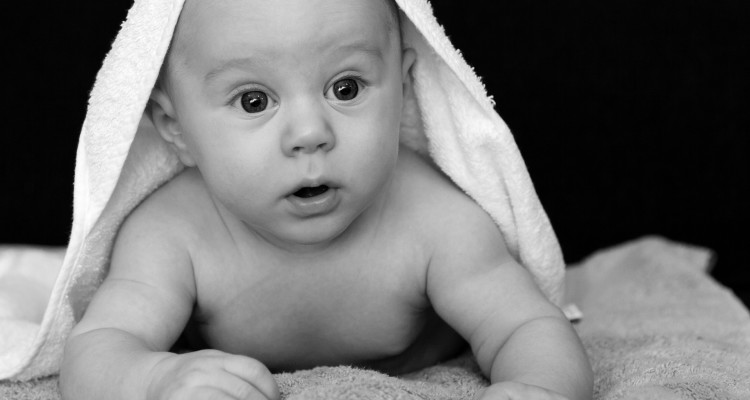There is a story about a boy at school who was asked in his science class how can the height of a building be measured. The teacher, a man somewhat lacking a funny bone, expected the answer to involve sunlight, shadows and a metre rule (or broomstick) and the use of the concept of congruent triangles. The boy wrote “use a barometer”. When told he was wrong, the boy complained. “Okay,” said the teacher, “as you’re such a clever-clogs, please explain how you would use a barometer.” To which the boy responded, “Which of the three* methods would you like, sir?”. He proceeded to explain you could measure the air pressure at the bottom and top of the building, and calculate from that; you could drop the  barometer from the top of the building, and time its fall, and calculate the height from the constant value of acceleration; and you could use the barometer as a ruler, and measure the height of each step inside the building. Each of those methods involves physics. “But,” explained the boy, “an antique barometer like the one in the classroom, sir, could also be given as a gift to the caretaker of the building, in exchange for the information.”
barometer from the top of the building, and time its fall, and calculate the height from the constant value of acceleration; and you could use the barometer as a ruler, and measure the height of each step inside the building. Each of those methods involves physics. “But,” explained the boy, “an antique barometer like the one in the classroom, sir, could also be given as a gift to the caretaker of the building, in exchange for the information.”
The boy was being creative. Ideas occurred to him that didn’t occur to the teacher. How did he see all these possibilities that didn’t occur to his mentor?
The other day I watched the first couple of episodes of ‘11.22.63’, an adaptation of a Stephen King novel. It has the clever idea of a man who finds he can time travel by entering a store cupboard (echoes of Narnia) that always sends him back to 1960. The question is, can he prevent Kennedy from being assassinated in 1963? It’s such a clever idea. Where do novelists find them?

Mnemosyne
The Greeks spoke of Mnemosyne, the leader of the Muses. Interestingly her name relates to ‘memory’ and the artist’s Muse or Genius, according to the Greeks, puts them in touch with the Divine ideas. As our word ‘inspiration’ means, in essence, an in-breathing of the spirit, we still maintain a similar idea to the present day. Inspiration cannot be commanded, and it is true that real creativity is 90% perspiration and 10% inspiration. But even if we cannot command inspiration, we can aid creativity.
I had the good fortune to be trained in Psychosynthesis, a psychotherapy developed by the Italian Assagioli. He developed many visualisation exercises. These were used as part of our training and they can, in turn, be used as part of therapy. But they are also wonderful ways of accessing the mind’s almost limitless creativity through what are essentially, waking dreams. Perhaps it is for this reason, when working on a book, I often find my best ideas come at night when I lie wake for a bit.
The other day at our Writer’s Group in Crete, we did an exercise that works really well. It is best done in pairs, but could be done on your own, if you have the discipline to write down what occurs immediately after you finish. In the method we used, you work with a colleague, who has your notebook, and asks you to think of your own fairy tale, beginning “Once Upon a Time …”. The great majority of people find that the story tells itself, full of unusual twists and turns. Somehow, the mind just throws up associations and combinations, that make sense as you tell the tale, and can surprise with their ingenuity when you review the story later. In the therapeutic setting we might look at the relationship between the story and the life of the client. But, for a writer, it is proof positive, that the ideas are there, just waiting to burst forth and take a life of their own.
This innate creativity can be used when you meet a blockage in a story you are planning. Let us say, your main character (MC) is in a tricky situation with two other characters, one who is fundamentally an antagonist and one who may be helpful to the MC’s purpose. I find it is important to name the characters by this stage, and to choose a name that fits energetically (the subject of another blog) as well as contextually. Once named, you can sit back and invoke the character by name, asking them questions. The answers will generally

come, in words or in images. As your sub-conscious has been working away all the time, often what ‘pops up’ is really useful. It may or may not get into the final version of your story, but it will be a stepping stone along the way.
Edward De Bono (of Lateral Thinking fame) has a technique that also always delivers. He would recommend having a bag of random small objects, or a numbered list of random items (e.g. feather, candy, washer, leaf, tile, grub, window, penguin … and so on). The list has to be quite long. Then using any method you like, state your problem in the story as clearly as you can, and randomly choose one word (with a pin, or finger-stab or by number). However improbable the word to your situation (in the story) work with it (perspiration) till an connection occurs (inspiration). This may give you a way forward.

In my latest book from the Timepathway trilogy, I wanted a confrontation, in the snow, between a Danish Captain on horseback leading a troop of soldiers on foot, and the family who are fleeing him. The time period is the Reformation and our heroes, are on skis. I was stuck as to how to get the family trapped and then how to enable them to escape. I looked for an image. It came, as an arrow sticking out of the horse’s rump, thwarting the sword-carrying Danish Captain as the horse rears.
So then I knew the youngest in the family, a girl, would be gifted in archery. That is set up when we first meet her at her home, before disaster sets in. But the idea came initially as a picture. After that it became a task of plotting, which although also creative, is more step by step and mechanical.
*On the Internet there are about 15 methods given now, but most are not using physics principles.
 barometer from the top of the building, and time its fall, and calculate the height from the constant value of acceleration; and you could use the barometer as a ruler, and measure the height of each step inside the building. Each of those methods involves physics. “But,” explained the boy, “an antique barometer like the one in the classroom, sir, could also be given as a gift to the caretaker of the building, in exchange for the information.”
barometer from the top of the building, and time its fall, and calculate the height from the constant value of acceleration; and you could use the barometer as a ruler, and measure the height of each step inside the building. Each of those methods involves physics. “But,” explained the boy, “an antique barometer like the one in the classroom, sir, could also be given as a gift to the caretaker of the building, in exchange for the information.”
 come, in words or in images. As your sub-conscious has been working away all the time, often what ‘pops up’ is really useful. It may or may not get into the final version of your story, but it will be a stepping stone along the way.
come, in words or in images. As your sub-conscious has been working away all the time, often what ‘pops up’ is really useful. It may or may not get into the final version of your story, but it will be a stepping stone along the way.


Leave a Reply